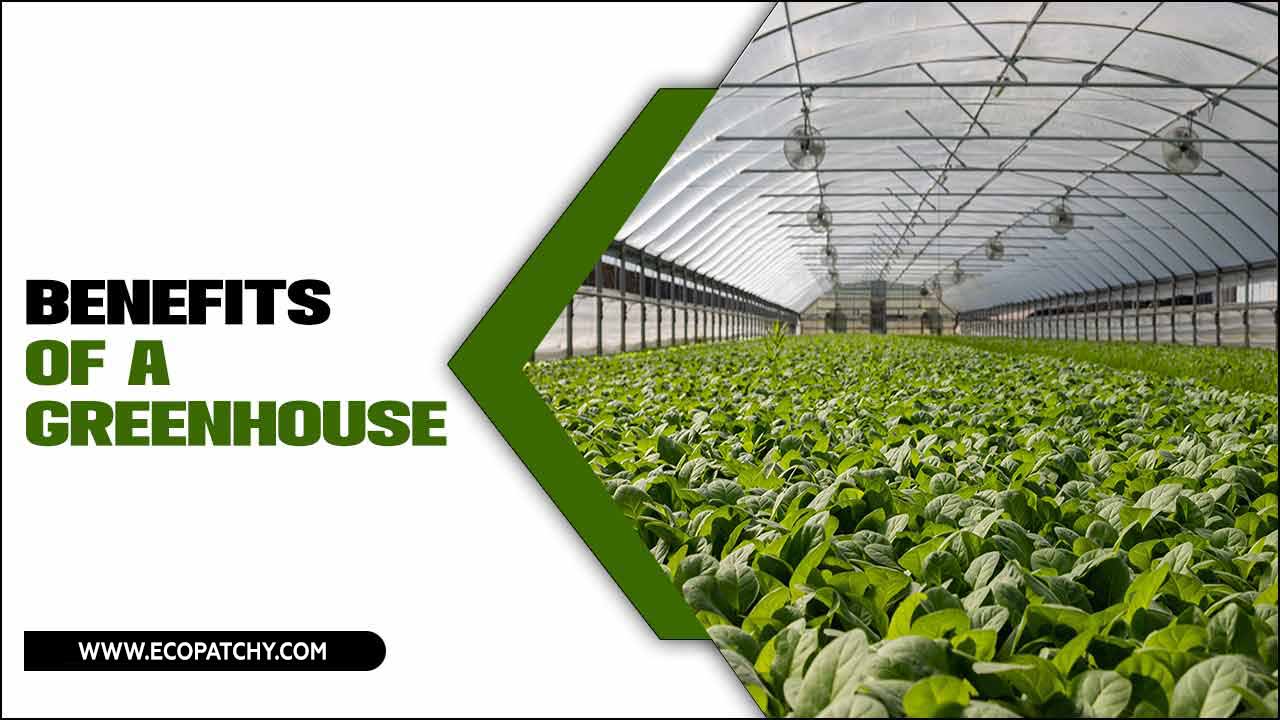Greenhouses have become a staple in modern agriculture, providing a controlled environment for plants to thrive in. These structures have also become popular among home gardeners, allowing them to extend their growing season and experiment with a wider range of plant species.
But have you ever wondered when this innovative concept was first introduced? The invention of greenhouses dates back centuries and has evolved through various forms and techniques. From simple glass structures to advanced technology, the evolution of greenhouses has had a significant impact on the way we grow and consume plants.
We will delve into When Were Greenhouses Invented, exploring their history, The Renaissance and the birth of modern greenhouses. Join us as we uncover the fascinating journey of the invention of greenhouses and the profound impact they have had on our agricultural practices.
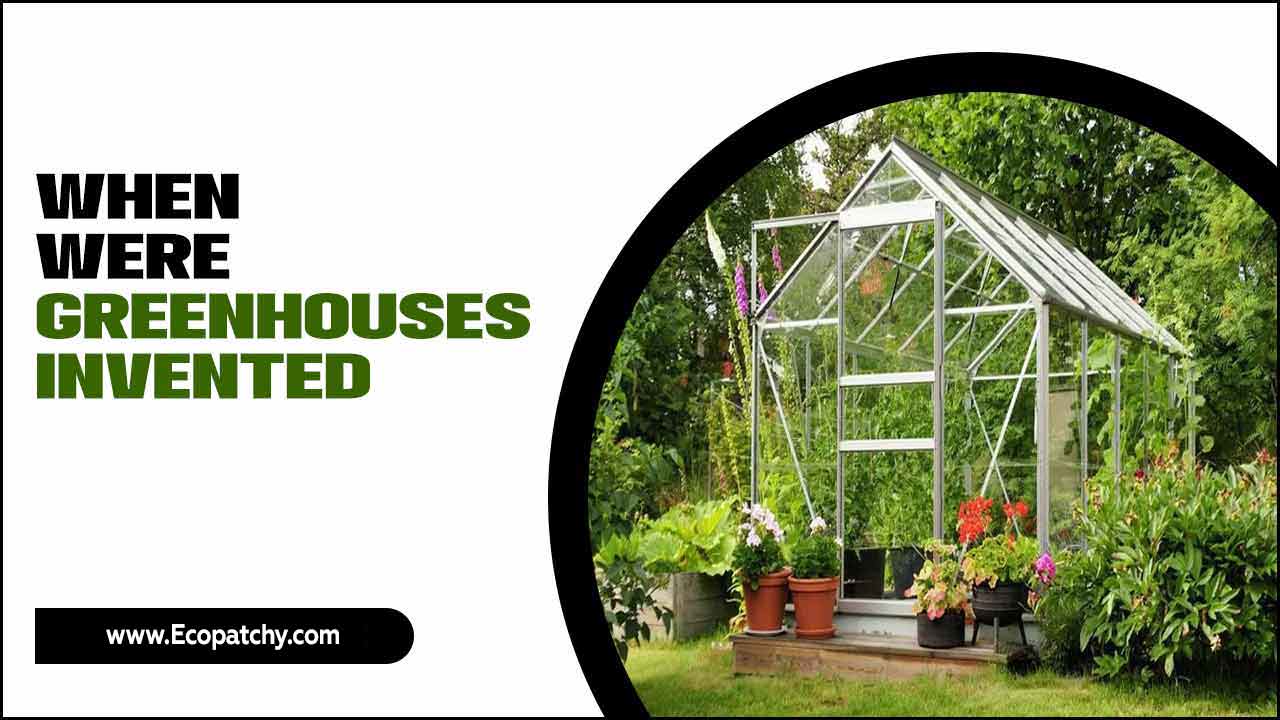
What Are Greenhouses?
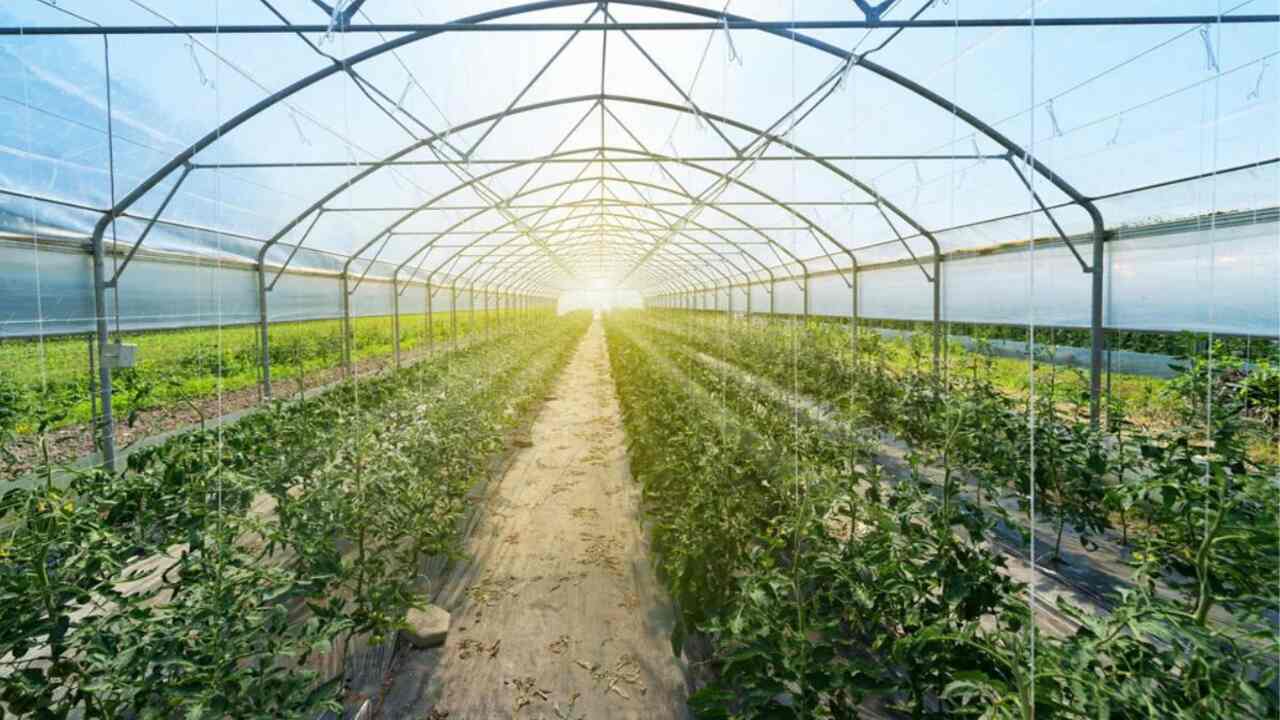
Greenhouses are structures designed for the cultivation of plants in controlled environments. These enclosed spaces provide a favorable environment for plant growth by maintaining optimal temperature, humidity, and light levels.
Greenhouses are typically made with transparent materials, such as glass or plastic, to allow sunlight to penetrate and trap heat inside. This creates a greenhouse effect, where the temperature inside the structure is higher than the outside temperature.
Early History Of Greenhouse-Like Structures
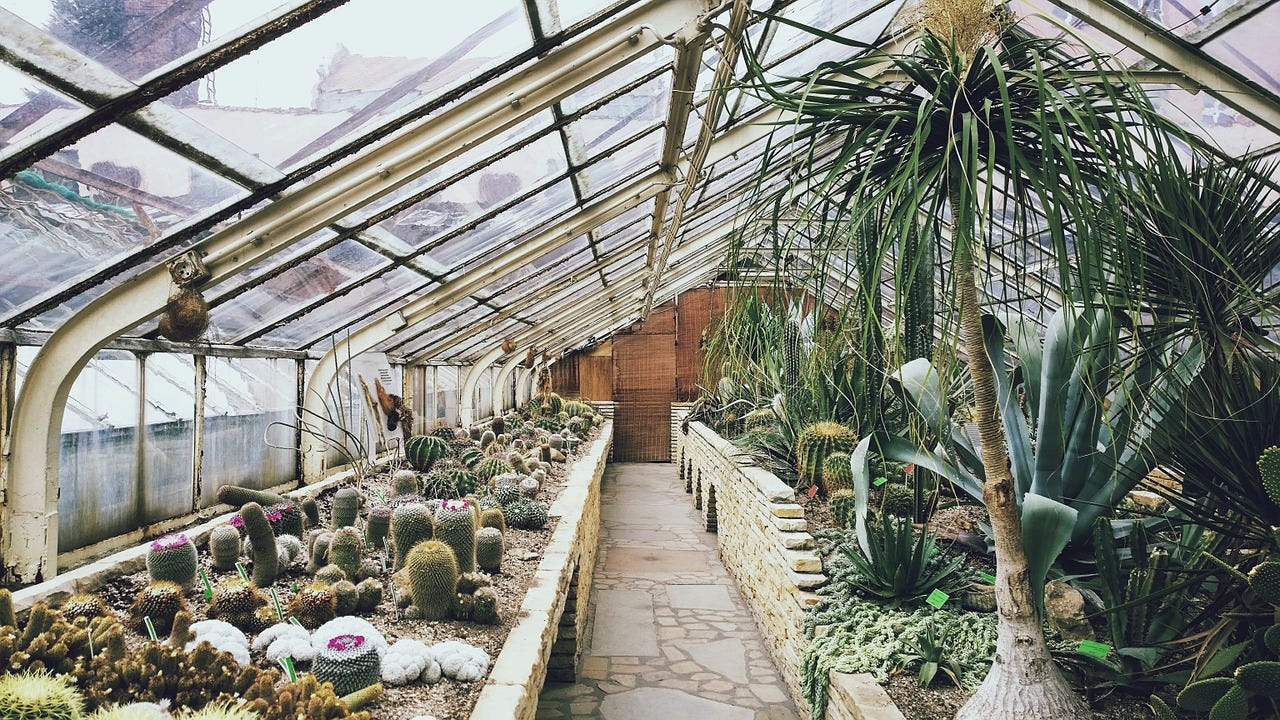
The early history of greenhouse-like structures dates back to ancient civilizations, where ingenious methods were employed to create controlled environments for plant growth. The concept of harnessing solar radiation to extend the growing season and protect plants from harsh weather conditions emerged as a crucial innovation in agriculture.
Early examples of greenhouse-like structures can be traced back to the Roman Empire, where wealthy individuals and botanists constructed rudimentary structures known as “specularia.” These structures were made of translucent stone or mica, allowing sunlight to penetrate while retaining heat and protecting delicate plants from cold temperatures.
During the Renaissance, advancements in architecture and horticulture led to the development of larger and more sophisticated greenhouse structures. The Italian Renaissance gardens featured orangeries, which were purpose-built structures to cultivate citrus fruits.
Importance Of Greenhouses In Modern Agriculture
Greenhouses have become an integral component of modern agriculture due to their immense importance in ensuring sustainable and efficient food production. The use of greenhouses allows farmers to create an optimal environment for plant growth, regardless of external weather conditions.
This controlled environment enables the cultivation of a wide range of crops throughout the year, resulting in increased productivity and a more consistent supply of fresh produce. In addition to temperature and humidity control, greenhouses also provide a barrier against pests and diseases.
The enclosed structure acts as a physical barrier, preventing the entry of unwanted insects or pathogens that could harm the crops. This reduces the reliance on chemical pesticides, resulting in healthier and more environmentally friendly produce.
When Were Greenhouses Invented: Uncovering The Roots
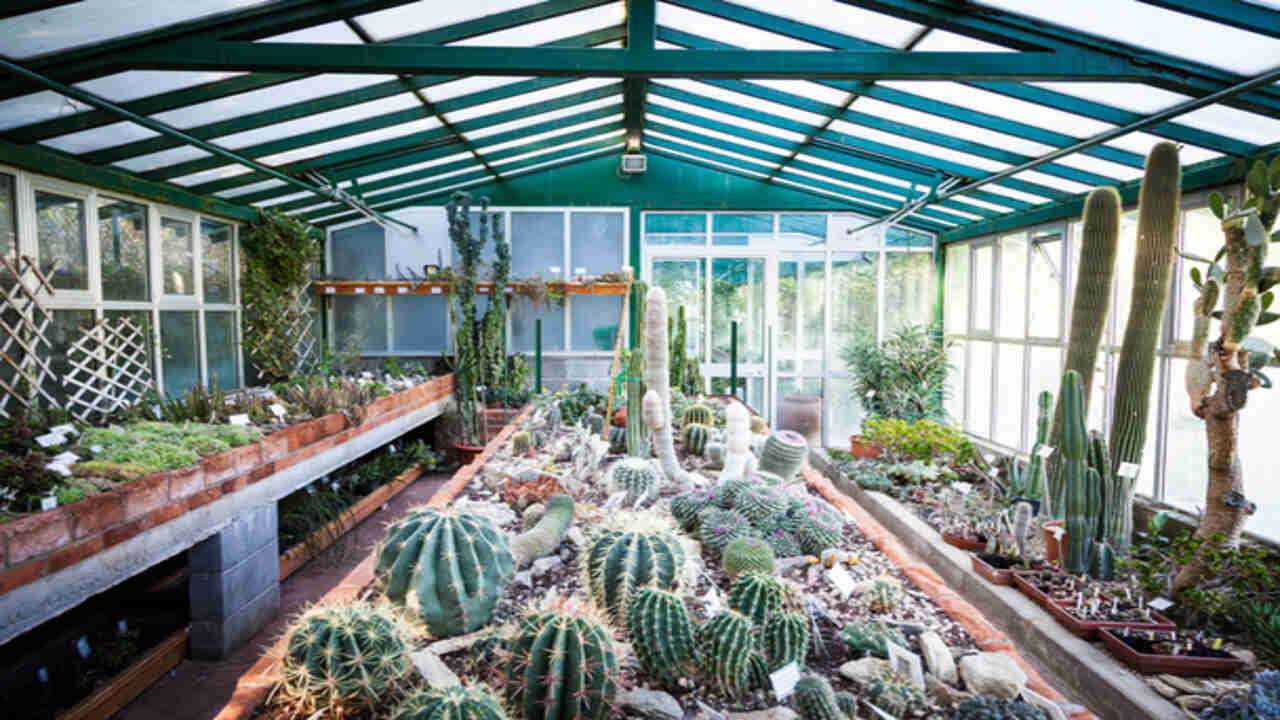
Greenhouses, as we know them today, have a rich history that dates back centuries. The concept of creating an enclosed environment to cultivate plants and extend the growing season can be traced back to ancient civilizations. However, it was not until the 15th century that the first formal greenhouses were invented.
The credit for this innovation goes to the Italian Renaissance botanist and architect, Leon Battista Alberti. In the late 1400s, Alberti designed and constructed the first known greenhouse in the form of a large glass structure in Florence, Italy.
This groundbreaking development allowed for the cultivation of exotic plants and provided a controlled environment for scientific experiments. The design of Alberti’s greenhouse featured large glass windows that allowed sunlight to penetrate and warm the interior, creating a microclimate ideal for plant growth.
The Renaissance And The Birth Of Modern Greenhouses
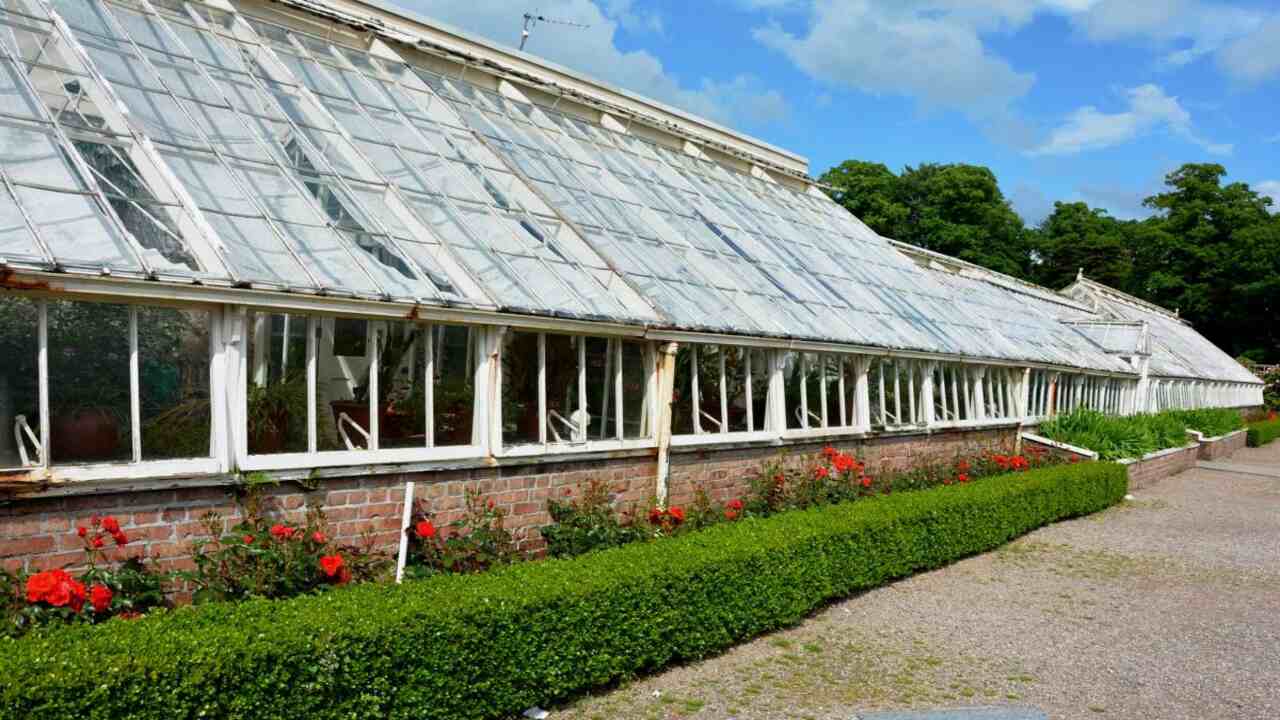
The Renaissance, a period of immense cultural and intellectual growth in Europe from the 14th to the 17th century, witnessed not only advancements in art, science, and literature, but also the birth of modern greenhouses, laying the foundation for modern agricultural practices.
During this time, explorers and scholars were captivated by the beauty and diversity of plants from faraway lands, leading to a heightened interest in horticulture and botany. As a result, innovative techniques were developed to cultivate these exotic plants in controlled environments, giving rise to the concept of greenhouses.
One of the key figures in the development of greenhouses during the Renaissance was Luca Ghini, an Italian botanist and physician. Ghini was the first to suggest the use of glass structures to protect plants from harsh weather conditions and create optimal growing conditions. His ideas were further refined by his student, Andrea Cesalpino, who introduced the concept of using transparent materials to trap heat and regulate temperature inside the greenhouse.
The Development Of Glassmaking Techniques
The development of glassmaking techniques has undeniably revolutionized the construction and functionality of greenhouses. Glass, with its unique properties of transparency and thermal insulation, has become the material of choice for creating controlled environments for plants and crops.
Over the years, advancements in glass manufacturing have allowed for the production of stronger, more durable glass panels that can withstand the elements and provide optimal growing conditions. One of the key innovations in glassmaking techniques is the use of tempered glass in greenhouse constructions.
Tempered glass is created through a process of heating and rapid cooling, which enhances its strength and resistance to breakage. This not only ensures the longevity of the greenhouse structure but also minimizes the risk of injuries caused by shattered glass.
Notable Advancements In Greenhouse Construction During The Renaissance
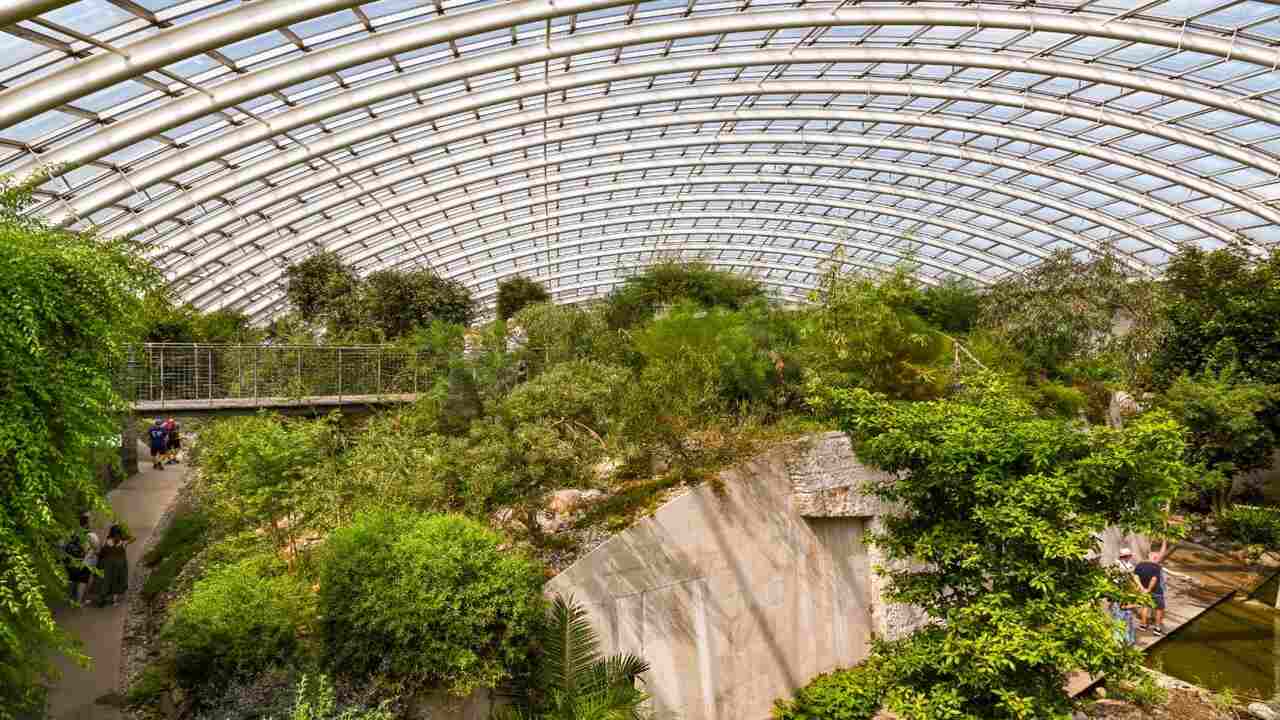
During the Renaissance, notable advancements in greenhouse construction emerged, revolutionizing the way plants were cultivated and studied. One significant development was the concept of the “orangery,” a dedicated structure designed to protect and nurture citrus trees during the colder months.
This innovation allowed for the cultivation of exotic fruits such as oranges and lemons in regions with colder climates, expanding trade and introducing new flavors to European cuisine. Additionally, Renaissance architects and scholars pioneered the use of glass in greenhouse construction. They recognized the importance of sunlight for plant growth and devised innovative techniques to maximize its exposure.
By incorporating large glass panels into greenhouse designs, they created an optimal environment for plants to thrive, regardless of the external weather conditions. These advancements not only facilitated year-round cultivation but also enabled researchers to study plant physiology and experiment with different growing techniques.
The 17th And 18th Centuries: Greenhouses In Europe
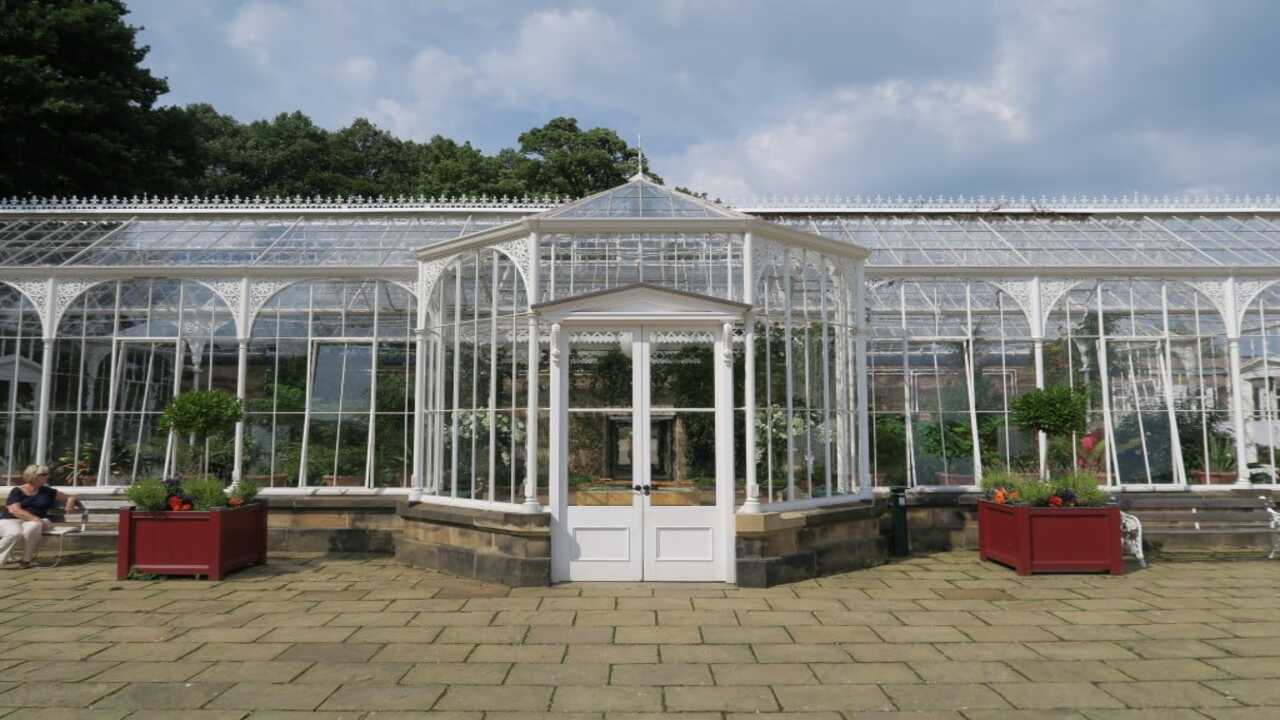
During the 17th and 18th centuries, greenhouses played a significant role in shaping the horticultural landscape of Europe. These structures, designed to create a controlled environment for plant growth, revolutionized the cultivation of various plant species and contributed to the expansion of botanical knowledge.
In Europe, greenhouses became increasingly popular among aristocrats and wealthy landowners who sought to showcase exotic plants from distant lands. The construction of these glass structures allowed for the development of sophisticated gardening techniques, enabling the cultivation of delicate plants that would otherwise struggle to survive in European climates.
The Emergence Of Orangeries And Conservatories
During the 17th and 18th centuries, the emergence of orangeries and conservatories marked a significant development in architectural design and horticulture. These structures, which originated in Europe, were primarily used for cultivating exotic plants and protecting delicate species from harsh weather conditions.
The concept of greenhouses had already been established, but the introduction of orangeries and conservatories brought a new level of sophistication and elegance to the practice. Orangeries were specifically designed to house citrus trees, which were considered a symbol of wealth and prestige during this time period.
These structures featured large windows and glass roofs, allowing ample sunlight to reach the plants while providing insulation against the cold. The use of brick or stone walls further enhanced the thermal properties, ensuring a stable and controlled environment for the citrus trees to thrive.
Prominent Greenhouse Structures And Their Impact On Horticulture
Greenhouses, with their controlled environment and ability to protect plants from adverse weather conditions, quickly gained popularity among European horticulturists.
These structures were primarily constructed using glass panels, which allowed for ample sunlight penetration while also trapping heat inside. This unique combination created a favorable microclimate that facilitated the growth of a wide variety of plants, irrespective of their natural habitat or the prevailing weather conditions.
The 19th Century: The Rise Of Commercial Greenhouses

During the 19th century, one of the most significant developments in agriculture was the rise of commercial greenhouses. This revolutionary concept transformed the way crops were grown and allowed for year-round production of various plants and vegetables.
The advent of commercial greenhouses was a response to the increasing demand for fresh produce, especially in urban areas where space for traditional farming was limited. The 19th century saw a rapid growth in population and urbanization, leading to a higher demand for food.
To meet this demand, farmers and horticulturists turned to the use of greenhouses, which provided a controlled environment for plant growth. These structures, made predominantly of glass or plastic, allowed for the regulation of temperature, humidity, and light, thus enabling the cultivation of crops even during unfavorable weather conditions.
Innovations In Greenhouse Heating And Ventilation
The 19th century witnessed significant innovations in greenhouse heating and ventilation, revolutionizing the way plants were cultivated and nurtured within controlled environments. These advancements paved the way for the development of modern horticulture and played a crucial role in meeting the increasing demand for year-round produce.
One of the notable breakthroughs during this era was the introduction of steam heating systems. This innovative technology replaced traditional methods such as wood or coal-burning stoves, providing a more efficient and consistent heat source.
The implementation of steam heating not only enabled the maintenance of optimal temperatures inside the greenhouse but also facilitated the growth of delicate and exotic plant species that were previously challenging to cultivate. Alongside heating advancements, the 19th century also saw significant progress in ventilation techniques.
The Impact Of The Industrial Revolution On Greenhouse Production
The Industrial Revolution of the 19th century had a profound impact on the greenhouse production industry. With the advent of new technologies and machinery, the agricultural sector experienced a significant transformation.
The introduction of steam power and the mechanization of agricultural processes revolutionized the way crops were cultivated and harvested. These advancements not only increased productivity but also enabled the establishment of large-scale greenhouse operations.
The Industrial Revolution brought about significant changes in greenhouse production practices. The introduction of steam-powered heating systems allowed for more precise temperature control, enhancing the growth conditions for plants. This, in turn, led to increased yields and improved quality of greenhouse-grown crops. Additionally, the mechanization of tasks such as irrigation and ventilation systems reduced labor costs and increased efficiency.
The 20th Century And Beyond: Technological Advancements In Greenhouse Technology
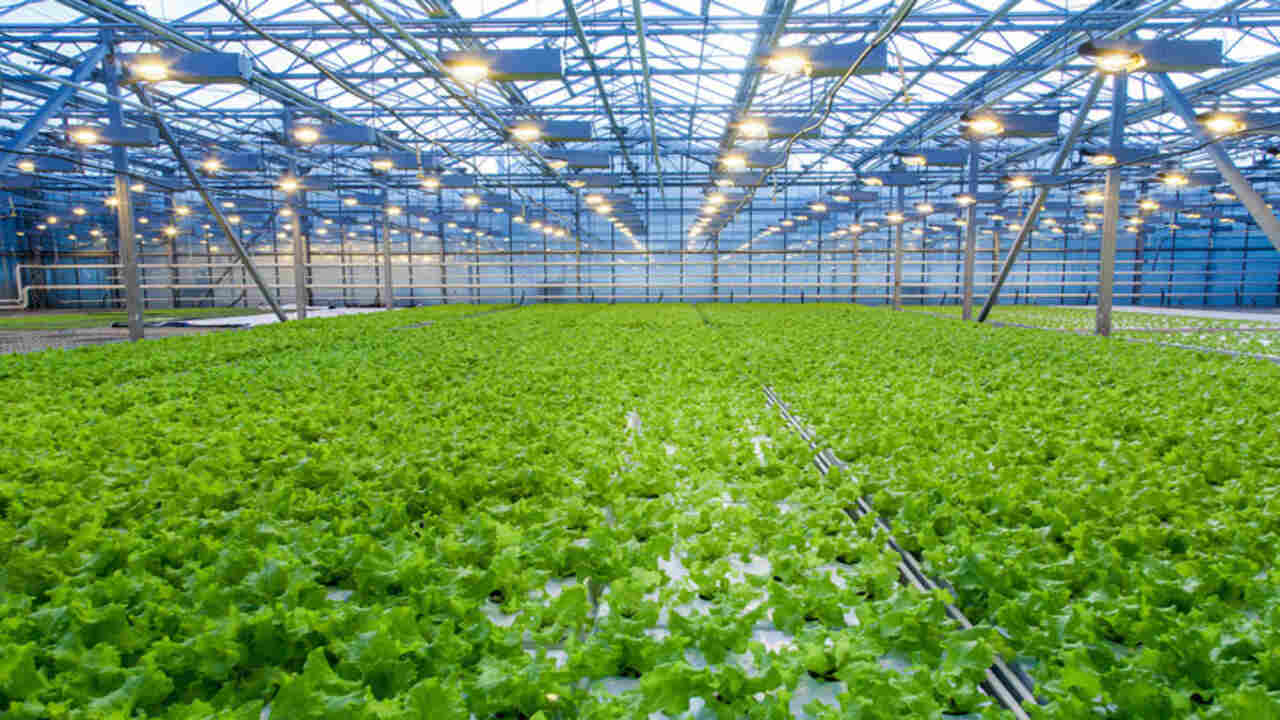
The 20th century marked a turning point in the field of greenhouse technology, as significant advancements were made to propel the industry forward. With the advent of new technologies, the cultivation of plants within controlled environments became more efficient and sustainable.
As the century progressed, these technological advancements continued to shape the way we approach greenhouse cultivation, setting the stage for what lies beyond. One of the most notable technological advancements in greenhouse technology during the 20th century was the development of automated climate control systems.
These systems allow for precise monitoring and adjustment of temperature, humidity, and light levels within the greenhouse, creating optimal growing conditions for plants. This level of control not only maximizes productivity but also minimizes energy consumption, making greenhouse cultivation more environmentally friendly.
Benefits Of Greenhouses
Understanding the benefits of greenhouses is crucial for individuals who are interested in sustainable agriculture and horticulture practices. Greenhouses offer a controlled environment that protects plants from unpredictable weather conditions, pests, and diseases. This controlled environment enables year-round cultivation, promoting a consistent supply of fresh produce and flowers.
- Extended Growing Season: Greenhouses provide a controlled environment that extends the growing season, allowing for yearround cultivation of plants.
- Protection From Extreme Weather: Greenhouses shield plants from harsh weather conditions like frost, excessive heat, heavy rain, and wind, ensuring their survival and health.
- Pest and Disease Control: By creating a physical barrier, greenhouses prevent pests and diseases from entering the growing area, reducing the need for harmful pesticides.
- Increased Crop Yield: The controlled environment in greenhouses optimizes growing conditions, resulting in higher crop yields and better quality produce.
- Efficient Use of Resources: Greenhouses allow for efficient use of water, fertilizers, and energy by providing a closed system where these resources can be carefully monitored and managed.
- Flexibility in Crop Selection: Greenhouses offer the opportunity to grow a wide range of crops, including exotic or outofseason varieties that may not thrive in the outdoor environment.
- Protection For Sensitive Plants: Greenhouses provide a nurturing environment for delicate or
The Largest Greenhouse In The World
The largest greenhouse in the world is an architectural marvel that showcases the perfect fusion of innovative design and sustainable practices. This extraordinary structure stands as a testament to humanity’s commitment towards combating climate change and preserving our environment. With its vast expanse and cutting-edge technology, the largest greenhouse is a beacon of hope for the future of agriculture and horticulture.
Greenhouses today
Greenhouses today have emerged as essential structures in modern agriculture, revolutionizing the way we grow plants and ensuring year-round production. These innovative enclosures provide controlled environments that optimize plant growth, protect crops from harsh weather conditions, and minimize the impact of pests and diseases.
With an increasing focus on sustainability and environmental preservation, greenhouses have become a vital tool in achieving efficient and eco-friendly agricultural practices. One of the key advantages of greenhouses today is their ability to extend the growing season.
By controlling variables such as temperature, humidity, and light levels, growers can create optimal conditions for plant growth even in the harshest climates. This enables farmers to cultivate a wider variety of crops throughout the year, ensuring a constant supply of fresh produce regardless of the season. Additionally, greenhouses offer protection against extreme weather events, such as frost, hailstorms, and excessive heat, which can devastate outdoor crops.
Conclusion:
It’s very important to know when When Were Greenhouses Invented. the invention of greenhouses has had a significant impact on agriculture and our ability to grow plants in various climates. From their humble beginnings in ancient Rome to their modern-day use in commercial farming, greenhouses have allowed for increased food production and a more diverse range of crops.
As we continue to face challenges such as climate change and food insecurity, greenhouses will play a crucial role in sustaining our agricultural practices and feeding our growing population. The innovation and evolution of greenhouses throughout history is a testament to human ingenuity and our ability to adapt to changing circumstances.
FAQs:
1.When Were Greenhouses Invented?
Ans: Greenhouses were first invented during the Roman era, around the 1st century AD. The Romans used simple structures made of translucent materials to create controlled environments for growing plants.
2.Who Is Credited With The Invention Of Greenhouses?
Ans: The Roman emperor Tiberius is often credited with the invention of greenhouses, as he had structures built to grow cucumbers year-round.
3.How Did Greenhouses Evolve Over Time?
Ans: Greenhouse technology continued to evolve throughout history. In the 17th century, advancements in glass manufacturing allowed for the construction of larger and more efficient greenhouses. The 19th century saw the introduction of heating systems, enabling year-round cultivation.
4.What Impact Did Greenhouses Have On Agriculture?
Ans: Greenhouses revolutionized agriculture by extending growing seasons, protecting crops from harsh weather conditions, and allowing the cultivation of plants that are not native to a specific region. They became essential for commercial plant production and played a significant role in global food production.
5.What Was The Purpose Of The First Greenhouses?
Ans: The first greenhouses were created to cultivate exotic plants brought from distant lands, and to protect delicate crops from harsh weather conditions.

